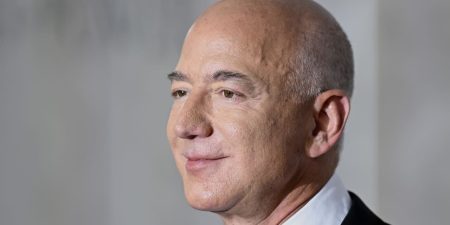Warren Buffett states, “For some reason people take their cues from price action rather than from values. Price is what you pay. Value is what you get.” Looking at recent trading in telecommunications giant Verizon Communications (VZ), I again see that Wall Street analysts often care little about Value and mostly about Price in their upgrade and downgrade decisions.
Even after damage had been inflicted on already battered shares of VZ and fellow telecom titan AT&T
T
…the analyst community waited until Monday, July 17, to decide that the stocks were no longer worthy of their love. The downgrades of ratings and target prices in response to the then-8-day-old lead-sheathing revelation sent the price of Verizon down another 7.5% to lows not seen in nearly 13 years, with one Bloomberg News story warning the following:
Analysts at Oppenheimer estimate that the fallout for the telecommunications sector stemming from the WSJ’s investigation into toxic lead cables won’t be less than $5B and not more than $50B. The analysts say they have a 90% confidence level about that range, adding that it will likely take the form of a class-action settlement. “Much of this is likely already reflected in the stocks, but we think the stocks will continue to suffer in an information vacuum,” they say. They add that the process of litigation and appeals will likely be a decade-plus process.
No doubt, the concerns raised in the Journal piece are not something easily dismissed as no level of lead exposure deemed safe was identified, while the investigation reportedly found elevated levels of lead at “roughly 80% of sediment samples taken next to underwater cables.”
However, none of this had been cause for much alarm prior to the report, with Verizon’s 2022 10-K filing offering no mention in its five pages of Risk Factors. And neither Verizon nor AT&T was compelled to address the report in the days that followed its release. Further, multiple major environmental groups have been aware of these cables for decades with no major wholesale remediation plan enforced or recommended. Moreover, there appears to be no evidence that suggests the telecommunications providers have failed to follow proper procedures in leaving the cables in place.
Of course, given the accelerated plunge in the stock prices, the companies became vocal later on July 17 and July 18. A Verizon spokesperson said the company’s copper network is composed of less than 540,000 miles of cable and that lead-sheathed cable makes up a “small percentage” of that, while AT&T in an impromptu investor call said less than 10% of its nationwide copper-wire telecom network has lead-clad cables. AT&T laid outs ifs “Framework” for how it is evaluating its lead-sheathing risk and the company released a spirited rebuttal to the Journal story:
VALUE IS WHAT YOU GET
The info from AT&T evidently caused a major rethink as stocks of both companies have rebounded strongly over the past seven days, with one Wall Street shop stating, “The [AT&T] framework suggests minimal health risk, minimal cable exposure, minimal financial risk (we estimate $246 million/year), and remedied over many years, if any risk at all.”
Obviously, “minimal” risk is a far cry from the $5 billion to $50 billion Oppenheimer estimate mentioned. While there are differing opinions about the consequences of disturbing equipment (that is no longer in use) versus leaving it in place, I understand that the matter will not be resolved any time soon. Still, I think the punishment meted out to VZ shares of late has been excessive, especially as I do not see any danger at this stage to the robust dividend payout, where the yield now stands at 7.6%.
Certainly, analysts and traders who chose to shoot first and ask questions later in their decision to bail on Verizon will argue that, despite the bounceback, the stock is still off 13% on the year and down significantly from its late-2019 high above $60. Further, the balance sheet has substantial debt, while earnings growth this year and next is likely to be stagnant.
However, I think substantial value exists, as a forward P/E ratio of 7.4 keeps me very enthused about the long-term total return potential for the stock. This is especially true, given that the S&P 500 Utilities Index, arguably a competing area of investment for income-focused folks, trades for roughly 18 times forward earnings and yields a bit more than 3%.
I might add that Verizon just turned in second quarter results that beat profit and subscriber count forecasts. Indeed, Q2 EPS came in at $1.21 vs. the $1.17 consensus estimate while the company added 384,000 wireless home internet customers (vs. 257,000 est.) and 8,000 wireless phone customers, compared to predictions of a loss of 10,000. My long-term, three-to-five target price for VZ is $56, which I think makes the stock a strong buy today.
Read the full article here















